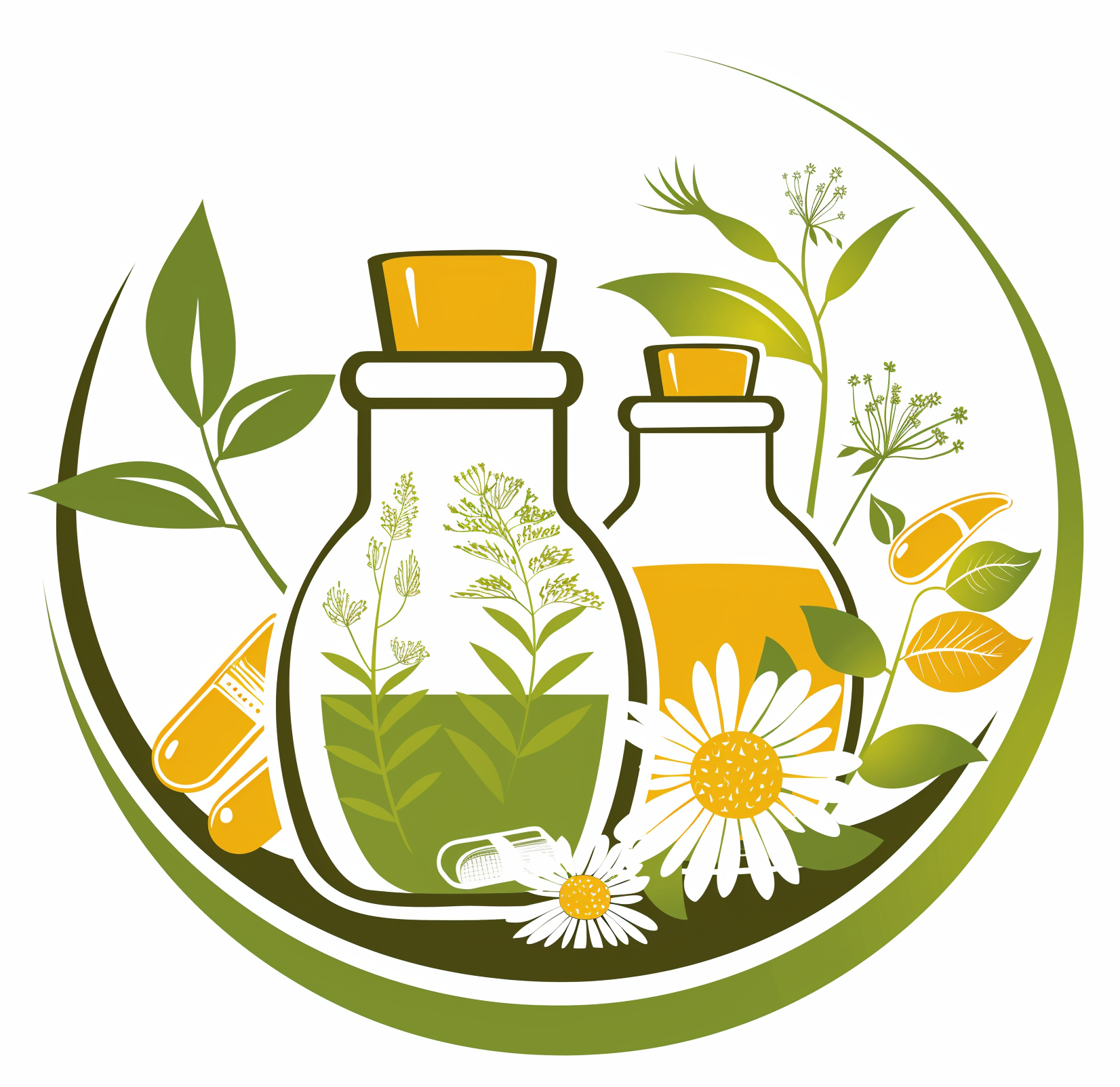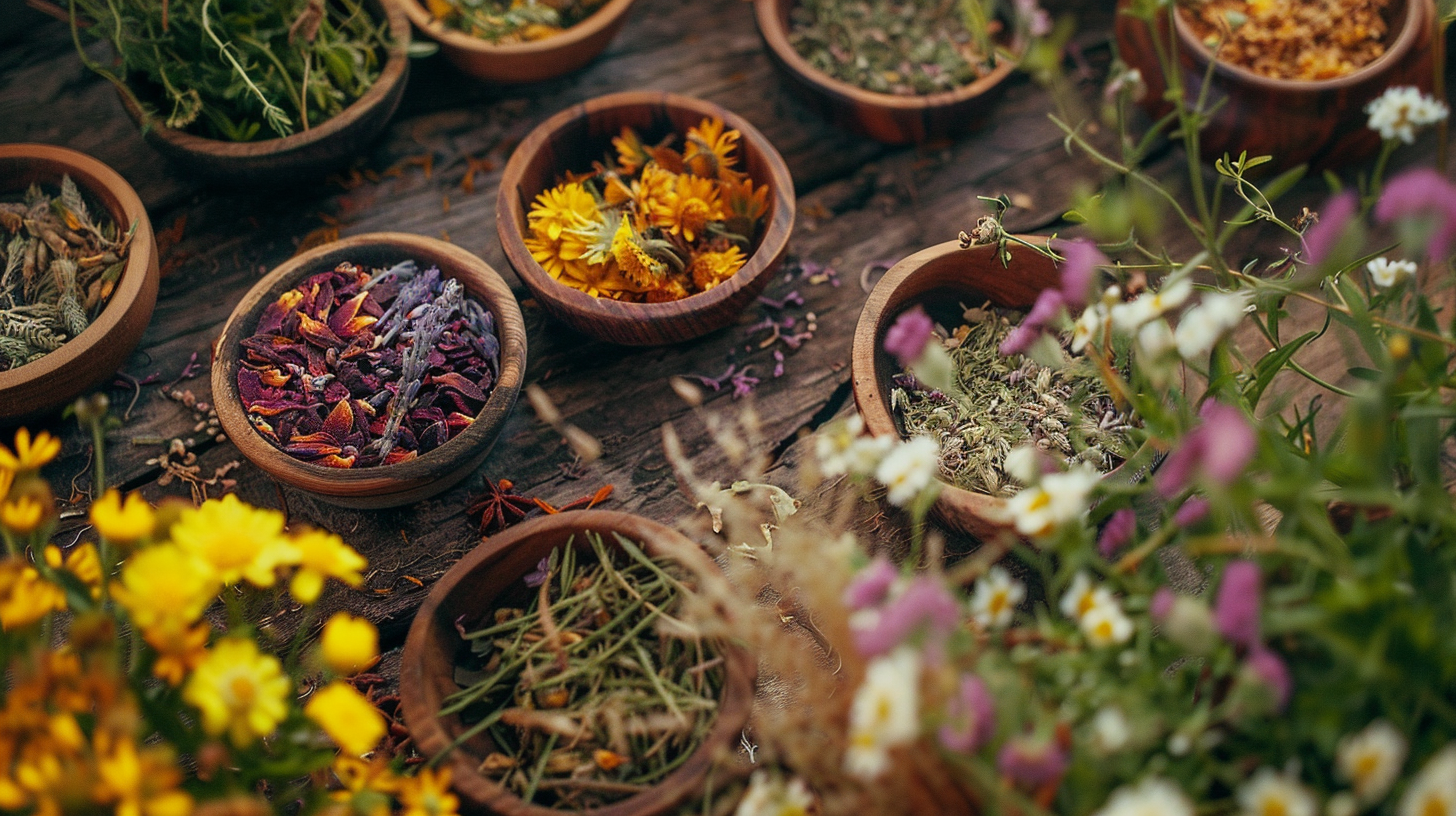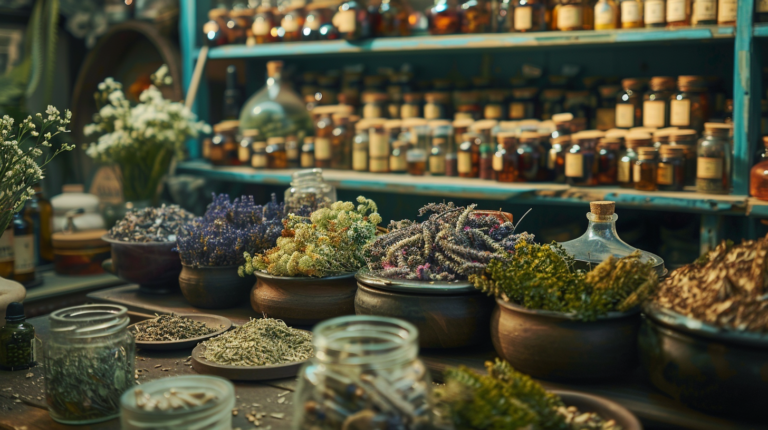Discover Herbalism: Ancient Wisdom for Modern Health
Imagine struggling day-to-day with minor ailments, feeling disconnected from the earth and bombarded by chemicals in every product you use. You’re not alone. Many people face this same dilemma, yearning for a more natural, holistic approach to health and wellness. But, finding a solution that is both effective and sustainable can feel overwhelming.
Here’s where the ancient practice of herbalism swoops in like a breath of fresh air. Rooted in centuries of traditional knowledge and revered worldwide—from ancient Egypt to modern-day China—this approach offers a natural remedy to our modern woes. By tapping into the healing properties of plants, you can reconnect with Nature, boost your health, and empower yourself with the wisdom of herbalists past and present.
Ready to embrace a lifestyle where herbs play a vital role in your daily routine? Welcome to the transformative world of herbalism, where the secrets to vibrant health and well-being are just a leaf away.
What is Herbalism?
Definition of Herbalism
The Art and Science
Herbalism, often referred to as the “art and science of healing with plants,” is a practice that has been utilized by humans for thousands of years. The fundamental idea is simple yet profound: using natural, plant-based remedies to promote health and well-being. This practice encompasses knowledge of medicinal plants, their properties, and their applications. Over time, it has evolved into a sophisticated system blending tradition and modern science.
Historical Background
Ancient Civilizations
Herbalism finds its roots in ancient civilizations such as Egypt, China, and India. The Egyptians, for instance, were known for their elaborate use of herbs like myrrh and frankincense in both medical and spiritual practices. Ancient Chinese medicine, which includes the famous Traditional Chinese Medicine (TCM), has utilized a vast range of plants and herbs since around 2800 BC.
Similarly, in ancient India, the system of Ayurveda emerged, focused heavily on the healing properties of plants. These ancient societies laid the groundwork for what we now refer to as herbal medicine, and their contributions continue to influence modern practices.
Evolution to Modern Times
As we transitioned from ancient to modern times, the knowledge of herbalism expanded and was integrated into various cultures across the globe. In the Middle Ages, herbal remedies were essential in Europe, with monasteries often serving as centers of medical knowledge where monks studied and preserved ancient texts on medicinal herbs. The Renaissance period marked a significant shift as more systematic methods of studying plants began, leading to the development of the botanical sciences.
Today, herbalism in the United States and other western countries blends traditional wisdom with modern scientific methods. Modern herbalists are now certified professionals who use medicinal herbs to complement conventional medical treatments.
Basic Principles
The Healing Properties of Plants
At the heart of herbalism lies the knowledge of plants and their unique compounds that contribute to healing. These include alkaloids, flavonoids, essential oils, and various other phytochemicals. For example, the echinacea plant is renowned for boosting the immune system, while St. John’s wort is often used for its antidepressant properties.
Understanding these healing properties requires not just medical knowledge but also a deep respect for nature’s complexity. Each plant’s therapeutic potential depends on factors like the part of the plant used (root, leaf, flower), the preparation method (tincture, infusion, decoction), and the condition being treated.
Common Practices and Techniques
Herbalism encompasses a variety of practices and techniques designed to extract and maximize the healing properties of plants. Some common practices include:
- Teas and Infusions: One of the simplest and most common ways to use herbs is by making herbal teas or infusions. These methods often involve steeping leaves, flowers, or roots in hot water.
- Tinctures: These are concentrated liquid extracts made by soaking herbs in alcohol or vinegar. Tinctures can be potent and are typically used in small doses.
- Salves and Balms: Made by infusing herbs in oil and then combining with beeswax, these are used topically to heal cuts, soothe burns, and alleviate skin conditions.
- Poultices and Compresses: These involve applying a moist, warm or cold cloth that has been soaked in an herbal infusion directly to the skin for various ailments.
- Essential Oils: Extracted through distillation, these concentrated oils capture the aroma and therapeutic properties of the plants and are often used in aromatherapy and skin care.
These techniques reflect a deep-rooted tradition that not only addresses physical ailments but also promotes overall health and wellness. From everyday kitchen remedies to sophisticated commercial products, herbalism invites everyone to explore the potent possibilities that lie hidden in the world of plants.
The Benefits of Herbalism
Health and Wellness
Preventive Care
Herbalism shines brightly as a beacon of preventive care. It is an empowering approach to maintaining health, fortifying the body’s defenses, and preventing illnesses before they take root. Rich in nutrients, herbs such as garlic, turmeric, and echinacea are packed with vitamins and minerals that support the immune system. Consuming these herbal supplements regularly can help bolster your body’s natural defenses, much like reinforcing the walls of a fortress.
Treatment of Common Ailments
When the inevitable sniffles and sneezes strike, herbalism offers a first line of defense. Instead of reaching for over-the-counter medications, why not brew a soothing tea or whip up a tincture? Plants like echinacea, known for its immune-boosting properties, and peppermint, perfect for digestive issues, have been used for centuries to treat everyday ailments. Picture this: a warm, fragrant cup of chamomile tea to ease a headache or a dab of ginger salve to relieve muscle pain. Herbal remedies not only alleviate symptoms but do so with a tender touch that modern medicine often lacks.
Support for Chronic Conditions
Chronic conditions require long-term management, and herbalism steps in with a holistic approach. Conditions such as arthritis, diabetes, and chronic fatigue can benefit from herbs that support overall health and target specific symptoms. For instance, turmeric’s anti-inflammatory properties make it a staple for those dealing with arthritis, while adaptogenic herbs like ashwagandha help manage stress and improve energy levels. The key here is consistency and an understanding of how these medicinal plants interact with the body over time.
Psychological and Emotional Benefits
Beyond physical health, herbs wield the power to soothe the mind and uplift the spirit. The act of making and consuming herbal medicine can be a meditative practice, connecting us with nature and ourselves. Herbs like lavender and chamomile are renowned for their calming effects, helping to ease anxiety and promote restful sleep. St. John’s wort, often dubbed the ‘sunshine herb,’ is used to combat mild to moderate depression. Imagine ending your day with a ritualistic cup of calming tea, washing away the stresses of modern life with each sip.
Environmental and Economic Benefits
Sustainability
Herbalism stands as a guardian of the environment. Growing your own herbs or sourcing them sustainably ensures that we treat the earth with the respect it deserves.
Cultivating a home garden reduces dependence on industrial agriculture, which often depletes soil and pollutes ecosystems.
Moreover, herbs are renewable resources that, when harvested responsibly, can continue to provide health benefits for generations.
As Rosemary Gladstar puts it, “Herbalism is truly an accessible, inexpensive, natural, gentle, and, most importantly, effective system of healing“.
Cost-Effectiveness
One of the shining advantages of herbalism is its cost-effectiveness. Compared to pharmaceuticals, herbal products are a fraction of the cost, making holistic health care accessible to all. You don’t need to break the bank to stay healthy. Growing your own herbs or purchasing dried herbs in bulk can save a significant amount of money, especially when you start making your own remedies. From teas to tinctures and salves, herbal preparations are not only easy on the wallet but also fun to create.
Essential Tools for Herbalism
Herbs and Plants
Common Medicinal Herbs
A well-stocked herbalist’s pantry features a variety of potent plants. Some of the most beloved and frequently used herbs include:
- Chamomile – for its calming and digestive properties.
- Echinacea – a powerful immune booster.
- Lavender – renowned for its calming and antiseptic qualities.
- Turmeric – famous for its anti-inflammatory effects.
- Garlic – a natural antibiotic and heart health hero.
These plants embody the essence of herbalism, offering a pharmacy of nature’s best remedies right at your fingertips.
Tips for Identifying and Harvesting
When it comes to identifying and harvesting herbs, keen observation and patience are essential. Always ensure proper identification before harvesting – many plants have toxic look-alikes. Use resources such as field guides and apps to assist in identification. When harvesting, follow the principle of taking only what you need and never more than a third of the plant, ensuring that it can continue to thrive. Additionally, harvesting in the morning after the dew has dried but before the sun’s full heat preserves the plant’s essential oils. Storing dried herbs in airtight containers, away from light and moisture, helps preserve their potency.
Equipment and Supplies
Kitchen Essentials
You don’t need a high-tech lab to start making your own herbal preparations. Here are some kitchen essentials:
- Cheesecloth or muslin for straining herbs
- Stainless-steel pots and strainers
- Glass jars for storing tinctures, salves, and dried herbs
- A grater (reserved for grating beeswax)
- A coffee grinder (reserved for grinding herbs)
These common kitchen items are all you need to embark on your herbal journey, transforming raw plants into potent herbal remedies.
Specialized Equipment
For those looking to delve deeper into herbalism, investing in specialized equipment can enhance your practice:
- Double boiler – essential for making infused oils without overheating
- Alcohol still – for creating concentrated tinctures
- Dehydrator – to efficiently dry herbs
- Mortar and pestle – for grinding herbs and seeds
- Professional-grade scales – for precise measurements
As your interest in herbal medicine grows, these tools can help you create more complex and effective herbal products.
How to Get Started with Herbalism
Growing Your Own Herbs
Starting a Home Medicine Garden
Starting your own medicine garden can be a deeply rewarding endeavor. Begin by selecting a sunny spot with well-drained soil. Some easy-to-grow medicinal plants for beginners include basil, mint, lavender, and calendula. Raised beds or containers can work wonders in small spaces. Remember, the key to a thriving garden is healthy soil – consider composting to enrich the earth. As you plant and care for your herbs, you’ll form a personal connection with them, understanding their growth patterns, preferences, and medicinal potentials intimately.
Container Gardening
If space is a constraint, fret not! Container gardening allows you to grow a variety of herbs even in small apartments. Choose containers with good drainage and fill them with a high-quality potting mix. Herbs such as rosemary, thyme, and sage thrive in pots. Place them on a sunny windowsill or balcony and water them regularly. Container gardening offers the flexibility to move plants around to maximize sun exposure and protection from the elements.
Making Herbal Remedies
Teas, Tinctures, and Infusions
Let’s start with the basics: teas, tinctures, and infusions. Herbal teas (or tisanes) are made by steeping herbs in hot water, a practice that can soothe the soul and the body simultaneously. Tinctures are concentrated liquid extracts made by soaking herbs in alcohol or vinegar, ideal for those who need a potent dose in a small volume. Infusions, similar to teas but steeped longer for a stronger brew, are perfect for extracting the full breadth of medicinal compounds from the plant.
Salves, Oils, and Balms
Topical applications of herbs come in many forms, including salves, oils, and balms. These are typically made by infusing herbs in oil, then mixing the oil with beeswax to create a solid form. Salves can be used for cuts, burns, and dry skin, while oils have applications in massage and skincare. For instance, a calendula infusion works wonders as a skin-soothing salve, while a lavender oil massage can be a relaxing end to a long day.
Poultices and Compresses
Poultices and compresses are traditional methods of applying herbs directly to the skin. A poultice is made by mashing fresh or dried herbs into a paste and applying it to the affected area, often used to draw out infections or reduce inflammation. A compress involves soaking a cloth in an herbal infusion and wrapping it around the body part – think of it as a herbal bandage bringing relief to localized pain or swelling.
Dosage and Safety Considerations
When delving into the world of herbalism, understanding dosage and safety is crucial. While herbs are natural, they are potent and must be used with care. Start with small doses and observe your body’s reactions. Books like “Herbal Medicine Maker’s Handbook” provide comprehensive guidelines. It’s always wise to consult a healthcare provider, especially when using herbs in conjunction with prescribed medications or if you have underlying health conditions.
Applications of Herbal Medicine
First Aid and Common Illnesses
Herbal First Aid Kits
Imagine having a compact kit filled with nature’s remedies, ready to tackle minor injuries and illnesses. An herbal first aid kit could include calendula salve for cuts, comfrey for sprains, and ginger for nausea. Not only are these remedies effective, but they also offer a gentle, holistic approach to health care.
Treating Everyday Ailments
Herbs have an impressive track record of treating common ailments. For headaches, try a peppermint tea or skullcap tincture. For colds and flu, elderberry syrup and echinacea are your go-to remedies. Digestive issues? Fennel seeds or ginger tea can work wonders. These simple, time-honored remedies offer a natural alternative to over-the-counter medications.
Chronic Illness Management
Management of chronic illnesses often requires a multifaceted approach, and herbs can play a supportive role. Herbs such as ashwagandha help manage stress, while milk thistle supports liver function. Incorporating these herbs into your daily routine can aid in managing symptoms and improving overall quality of life.
Herbal Nutrition and Supplements
Integrating Herbs into Your Diet
Integrating herbs into your diet is an effortless way to reap their benefits. Fresh herbs not only add flavor but also boost the nutritional content of meals. Sprinkle parsley for a dose of vitamin C, add turmeric to soups for its anti-inflammatory properties, or blend basil into a homemade pesto. The possibilities are endless and delicious!
Making Herbal Supplements
Making your own herbal supplements can be incredibly empowering. From encapsulating powdered herbs to concocting syrups, the process allows you to customize your intake according to your health needs. For instance, turmeric capsules can be an everyday supplement for joint health, while elderberry syrup serves as a seasonal immune booster.
Herbalism in Modern Healthcare
Complementary and Integrative Medicine
Combining herbalism with mainstream medicine, also known as integrative medicine, can offer a balanced approach to health care. Herbal remedies can complement treatments by addressing side effects and supporting overall well-being. For instance, ginger may alleviate nausea caused by chemotherapy, and valerian root can aid sleep without the hangover effect of pharmaceutical sleep aids.
Professional Herbalists and Training
Certifications and Education Paths
If you’re passionate about diving deeper into herbalism, consider formal education and certification. Institutions such as the American Herbalists Guild and the National Institute of Medical Herbalists offer rigorous training programs. These programs cover everything from plant identification and herbal pharmacology to clinical skills.
Choosing a Qualified Herbal Practitioner
When seeking professional guidance, it’s essential to choose a qualified herbalist. Look for practitioners who are certified by reputable organizations and have extensive training and experience. A professional herbalist can provide personalized consultations, helping you navigate the complexities of herbal medicine safely and effectively.
Resources for Further Learning
Books and Publications
For the literary explorers, there is no shortage of knowledge-rich texts to dive into. Titles like “Rosemary Gladstar’s Medicinal Herbs: A Beginner’s Guide” offer practical advice and recipes for beginners and seasoned users alike.
Online Courses and Workshops
The digital age has brought the world of herbalism into your living room. Online courses and workshops allow you to learn from experts regardless of your location. Schools like the Institute of Medical Herbalists and Sacred Plant Traditions offer comprehensive programs that cover a range of topics from basic herbology to advanced clinical practices.


